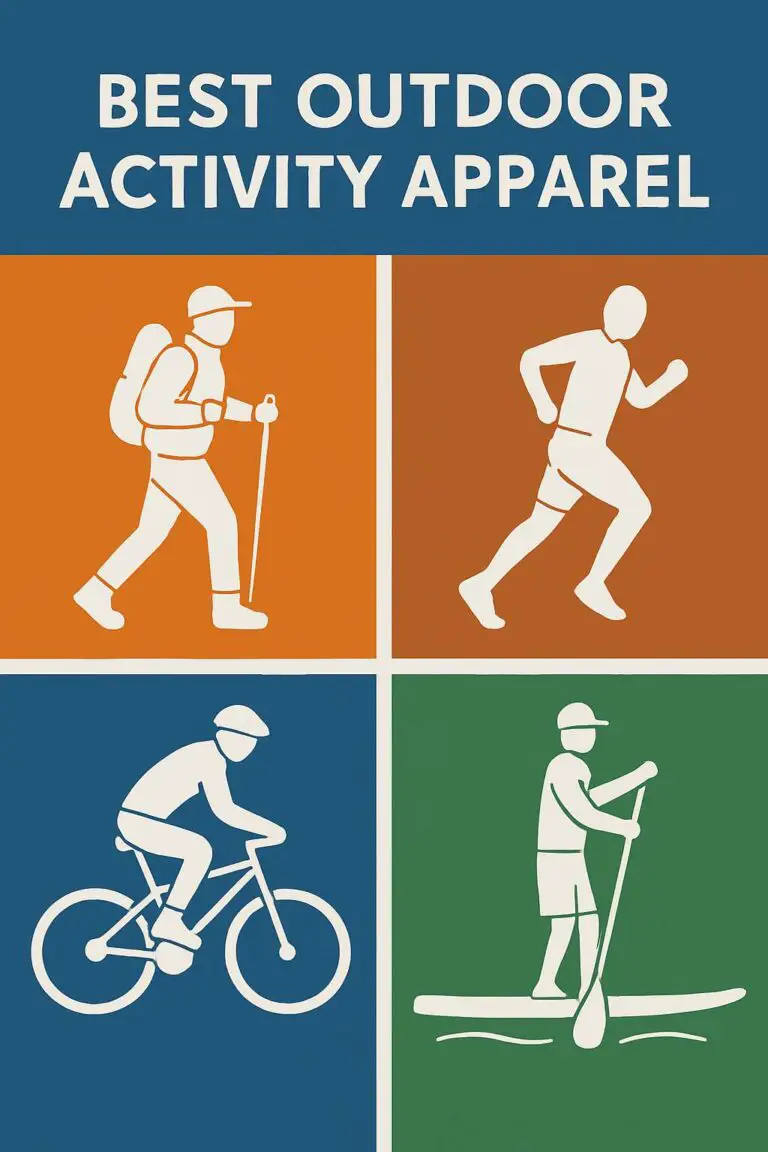Treetop trekking has become a sought-after adventure activity, captivating the hearts of outdoor enthusiasts around the world. However, amidst the exhilaration, there’s a crucial factor that every participant must consider: the treetop trekking weight limit. Understanding and adhering to weight limits is vital not only for your safety but also for ensuring a seamless and enjoyable experience.
The weight limit for treetop trekking activities can vary depending on the course and facility. It typically ranges from 220 to 286 pounds (100 to 130 kilograms). However, it’s important to check with the specific treetop trekking facility for accurate and up-to-date weight limit information.
In this comprehensive guide, I will delve into the world of treetop trekking weight limits, exploring their importance and how they impact your adventure. Whether you’re a seasoned adventurer or a first-time participant, this guide will equip you with the knowledge you need to make the most of your treetop trekking experience.
Let’s dive in!
Understanding Treetop Trekking
Treetop trekking, also known as aerial adventure parks or canopy tours, is an exhilarating outdoor activity that allows participants to navigate through a series of suspended obstacles, zip lines, and platforms high up in the trees. It combines the thrill of adventure with the beauty of nature, offering a unique and immersive experience for all ages.
The concept of treetop trekking originated from the desire to explore and interact with the natural environment in a thrilling way. Today, it has gained immense popularity as an outdoor recreational activity, attracting adventure seekers, nature lovers, and families looking for an exciting escape.
Treetop trekking courses are typically constructed within forests or specially designated areas, where the natural landscape is utilized to create a challenging and visually stunning course. Participants are equipped with safety gear such as harnesses and helmets and are guided through the course, ensuring their safety throughout the adventure.
The courses consist of a variety of elements, including suspended bridges, tightropes, swinging logs, and cargo nets, which require participants to navigate their way from one platform to another. The highlight of treetop trekking is often the thrilling zipline rides, where participants glide through the air from one tree platform to another, enjoying breathtaking views and an adrenaline rush like no other.
Engaging in treetop trekking offers numerous benefits beyond sheer excitement. It provides an opportunity to challenge oneself physically and mentally, enhancing strength, balance, and problem-solving skills. Moreover, being immersed in nature has proven therapeutic effects, reducing stress and promoting overall well-being.
Now that you have an understanding of treetop trekking, let’s go into the importance of weight limits to ensure a safe and enjoyable experience for all participants.
Factors Influencing Weight Limits
Weight limits in treetop trekking courses are carefully determined based on a variety of factors. These factors ensure participant safety, preserve the structural integrity of the course, and maintain the functionality of the equipment used. Understanding the following key factors that influence weight limits will help you navigate the treetop adventure responsibly:
-
Structural Considerations:
- Tree Strength: The strength and health of the trees supporting the course play a crucial role in determining weight limits. Trees need to be capable of bearing the load of participants and equipment without compromising their stability.
- Platform Design: The design and construction of the platforms that connect the course elements also impact weight limits. They need to be structurally sound and able to support the weight safely.
-
Equipment Limitations:
- Harnesses and Safety Gear: The safety equipment, including harnesses, carabiners, and helmets, have specific weight restrictions determined by manufacturers. These limitations ensure the equipment functions optimally and provide adequate protection for participants.
- Ropes and Cables: The ropes and cables used in treetop trekking courses have weight limits to maintain their strength and prevent unnecessary wear and tear.
-
Zipline Capabilities and Braking Systems:
- Zipline Design: Each zipline has its own weight limit based on factors such as the cable’s strength, braking system, and the distance between platforms. Adhering to these weight limits ensures a smooth and safe ziplining experience.
- Braking Systems: Ziplines are equipped with braking systems that rely on participant weight to regulate speed and ensure a controlled landing. Exceeding weight limits can affect the effectiveness of these systems.
-
Environmental Conditions:
- Weather and Temperature: Extreme weather conditions, such as high winds, heavy rain, or extreme temperatures, can impact the safety and functionality of the treetop trekking course. Weight limits may be adjusted or activities suspended in such conditions to prioritize participant safety.
It’s important to note that weight limits may vary from one treetop trekking facility to another, depending on the course’s design, equipment, and environmental factors. Understanding and respecting these weight limits are essential for a safe and enjoyable experience for all participants.
Common Weight Limit Ranges
Weight limits in treetop trekking courses can vary based on factors such as course design, equipment specifications, and safety considerations. While specific weight limits may differ among different facilities, here are some common weight limit ranges you might encounter:
-
Low-Intensity Courses:
- Children’s Courses: Designed for younger participants, weight limits typically range from 30 to 80 kilograms (66 to 176 pounds).
- Beginner Courses: Geared towards novice adventurers, weight limits usually fall between 90 to 110 kilograms (198 to 242 pounds).
-
Intermediate Courses:
- Moderate Adventure Courses: Intended for participants with some experience, weight limits can range from 90 to 120 kilograms (198 to 264 pounds).
- Family-Friendly Courses: These courses cater to a wide range of ages and skill levels, with weight limits spanning from 100 to 120 kilograms (220 to 264 pounds).
-
High-Intensity Courses:
- Advanced Courses: Designed for experienced adventurers, weight limits may range from 100 to 130 kilograms (220 to 286 pounds) or higher, depending on the course’s difficulty level.
It’s important to remember that these weight limit ranges are general guidelines and can vary significantly from one treetop trekking facility to another. Some facilities may have specific weight limits for individual elements, such as zip lines or elevated obstacles, within their courses. Always check with the facility or consult their website for accurate and up-to-date information regarding weight limits.
Ensuring Safety and Enjoyment
When embarking on a treetop trekking adventure, it’s crucial to prioritize safety and take necessary precautions to ensure a memorable and enjoyable experience. Here are some practical tips to keep in mind:
-
Check Weight Limits Before Booking:
- Prior to making a reservation or visiting a treetop trekking facility, thoroughly review their website or contact their staff to determine the specific weight limits for their courses.
- Make sure you meet the weight requirements to avoid disappointment or safety issues on the day of your adventure.
-
Follow Facility Guidelines:
- Treetop trekking facilities provide safety guidelines and instructions for participants. Familiarize yourself with these guidelines and adhere to them at all times.
- Listen attentively to the safety briefing provided by the instructors and ask any questions you may have.
-
Communicate Concerns or Questions:
- If you have any concerns or questions regarding weight limits or safety measures, don’t hesitate to communicate with the facility staff. They are there to assist you and ensure a safe experience for all participants.
-
Proper Fitting of Safety Equipment:
- Ensure that your safety harness, helmet, and other equipment provided by the facility are properly fitted and secured before starting the course.
- Follow the instructions provided by the instructors on how to wear and adjust the safety gear correctly.
-
Observe Weather Conditions:
- Pay attention to the weather forecast and any specific guidelines provided by the facility regarding inclement weather conditions.
- If severe weather conditions arise, such as thunderstorms or high winds, be prepared for potential course closures or activity suspensions to prioritize your safety.
-
Respect Your Physical Limits:
- Be aware of your own physical capabilities and limits. Take breaks as needed and listen to your body.
- If you have any pre-existing medical conditions or concerns, consult with your healthcare provider before participating in treetop trekking activities.
Conclusion
Treetop trekking offers an exhilarating adventure that allows you to explore heights, challenge yourself, and immerse yourself in nature. Understanding and respecting the treetop trekking weight limits is paramount to ensuring your safety, the preservation of the course, and the optimal functioning of the equipment.
While weight limits typically range from 220 to 286 pounds (100 to 130 kilograms), it’s essential to confirm with the specific facility you plan to visit. By respecting these limits, you can embark on a thrilling journey through the treetops, knowing that your safety and the integrity of the course are prioritized.
It’s time to soar among the trees, navigate thrilling obstacles, and create memories that will last a lifetime. Stay safe, have fun, and enjoy every moment of your treetop trekking adventure!
Related articles:
Treetop Adventures For Families: How To Make It A Fun Experience For All Ages




